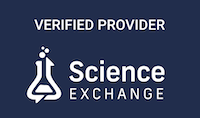OncoBone is a distributor of small-animal DXA iNSiGHT in Europe.
Basics of DXA technology and its use in bone and metabolic diseases
DXA (Dual-energy X-ray Absorptiometry) is a measurement technology based on variable absorption of high and low energy X-rays by different body components, allowing fast and reliable analysis of bone, soft and fat tissues. iNSiGHT DXA is a fully shielded body composition analyser for small laboratory animals such as rodents that offers fast scanning time, high-resolution images and user-specified multiple ROI analytics with ultimate precision and accuracy.
Non-invasive iNSiGHT DXA has overcome the limitations of conventional methods by fast planar imaging, minimal radiation exposure and radiation-free environment for researchers, offering a novel optimized method for in vivo imaging of small animals that allows longitudinal investigations with repeated scannings in long-term studies. iNSiGHT has been widely used in bone and metabolic diseases. Below is a summary of two recent publications where iNSiGHT has been used.
Read more about iNSiGHT small-animal DXA here.
Case example 1: Analysis of sarcopenia in experimental colitis model
The study evaluated the effects of a IL-12/23 neutralizing antibody in sarcopenia. The researchers used dextran sulfate sodium to induce colitis. During the colitis induction phase, IL-12/23 neutralizing antibody was given to the mice at days 3 and 5, and the study lasted a total of 8 days. Body composition was analyzed by iNSiGHT DXA at the end of the study.
The study results indicated that IL-12/23 neutralizing antibody suppressed colitis in the model and helped to maintain muscle mass and improve muscle function. DXA analysis revealed decreased fat and lean mass together with decreased body weight in a control group with colitis receiving vehicle compared to healthy mice or mice with colitis treated with IL-12/23 neutralizing antibody. You can find the full research publication from the following link:
Jung YK, Lee S, Yoo JI, Baek KW. The protective effect of IL-12/23 neutralizing antibody in sarcopenia associated with dextran sulfate sodium-induced experimental colitis. J Cachexia Sarcopenia Muscle. 2023 Apr;14(2):1096-1106. doi: 10.1002/jcsm.13208. Epub 2023 Mar 5. PMID: 36872597; PMCID: PMC10067489.
Case example 2: Analysis of bone parameters in different mouse strains with different metabolic activity
The study evaluated bone remodelling in three mouse stains, C3H, BALB/c and C57BL6, with different fat and lean masses. C3H mice had the highest body weight together with the highest fat and lean mass as determined by DXA, followed by C57BL6 and BALB/c mice. Bone mineral density (BMD) and bone mineral content (BMC) measured by DXA indicated similar findings, demonstrating that C3H mice with highest body mass had also highest BMD and BMC values, followed by C57BL6 and BALB/c mice. The DXA results correlated with more detailed analysis of bone analyzed with more extensive methods such as µCT and bone histomorphometry.
The study also evaluated effects of ovariectomy and the use of bisphosphonates on bone parameters. If you are interested to learn more about the study, you can find the full research publication from the following link:
Kim MY, Lee K, Shin HI, Lee KJ, Jeong D. Metabolic activities affect femur and lumbar vertebrae remodeling, and anti-resorptive risedronate disturbs femoral cortical bone remodeling. Exp Mol Med. 2021 Jan;53(1):103-114. doi: 10.1038/s12276-020-00548-w. Epub 2021 Jan 12. PMID: 33436949; PMCID: PMC8080628.
Read more about scientific research done with iNSiGHT small-animal DXA here.
If you are interested to learn more about iNSiGHT small-animal DXA, please contact us at info@oncobone.com.


